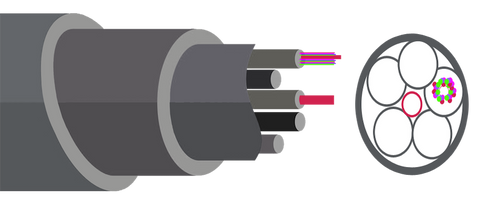Signal Booster News
Quadrature Amplitude Modulation (QAM) for Network Operators
May 26, 2016
QAM controls digital information when it is transmitted between two points by enabling analog signals to transmit digital data efficiently. It also enables more bits to be transmitted in the same period, effectively increasing the bandwidth. QAM is a modulation scheme that changes the amplitude (power level) of two signals when data is transmitted. The first signal is in phase with the data that comes in, while the second is out of phase by 90 degrees. How QAM is referred to, is based on the number of bits of information encoded in a time period. Eight bits for example defines...
Multimedia over Coax Alliance (MoCA) for in-Home Networking over Coaxials
May 25, 2016
Homeowners can pause a movie they are watching on a TV, go to another room and continue the movie from the same place on another TV. This technology is known as MoCA 2.0 and it follows a standard created by the Multimedia over Coax Alliance. MoCA technology was developed in USA during the year 2004 and it allows in-home networking over coaxial cable. Coaxial cable has traditionally been used to bring cable television signals into homes. MoCA 2.0 allows users to download HD programming to their set top box. That same content can then be sent to another room in the house....
Intelligent Buildings are Connected and Efficient
May 24, 2016
Intelligent buildings were first mentioned in the early 1980s, but a globally acceptable definition of an intelligent building's attributes has not been established yet. Although various organizations have attempted to do this, there are numerous definitions, each with varying level of detail and a different emphasis on selected aspects of building intelligence. In spite of this, it is clear that an intelligent building is both connected and efficient. All connected buildings have a communications infrastructure that is integrated and supports wireless and wired applications and networks. It also enables person-to-machine, person-to-person and machine-to-machine communications, both inside the building and with the...
Cell Clusters Minimize Interference in Cellular Networks
May 23, 2016
Radio transmitters within a wireless network only have a specific coverage area beyond which the signal level falls so low that it can't be used. At this point, it will also not cause significant interference to a mobile device connected to another radio transmitter. This makes it possible to re-use a channel once it is outside the range of a specific radio transmitter. The same holds true for signals that can only be received over a certain range. A network operator will typically split up their coverage area into smaller regions called cells. Each cell is then covered by a...
Microduct Solution Benefits for Broadband & Cable Operators
May 20, 2016
Cable and broadband operators must improve their network architectures to keep up with the data demands of subscribers. One way to achieve this is to push fiber deeper into networks. The cost of reconstructing and/or building networks is however very challenging. Operators can however meet their infrastructure needs, create new growth, and reduce future construction costs by deploying microducts. Microducts are tiny conduits that house microcables. Typical microduct sizes included 10 mm, 12.7 mm and 16 mm in which up to 144 fibers can be housed. Microducts can be used in fiber-to-the-business (FTTB), fiber-to-the-home (FTTH), backhaul, long-haul and premise fiber deployment....






